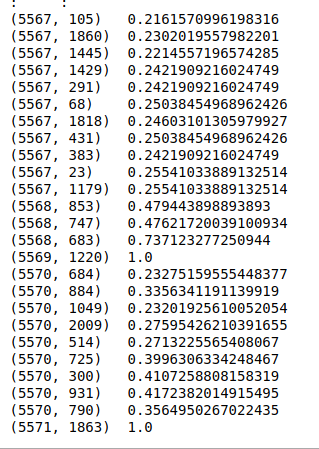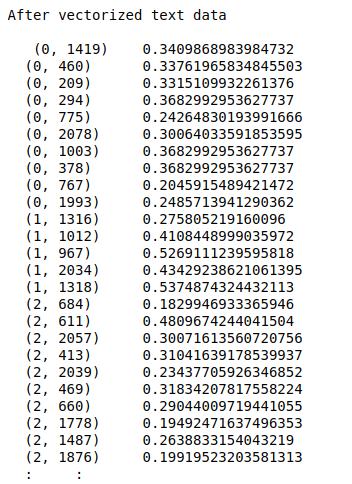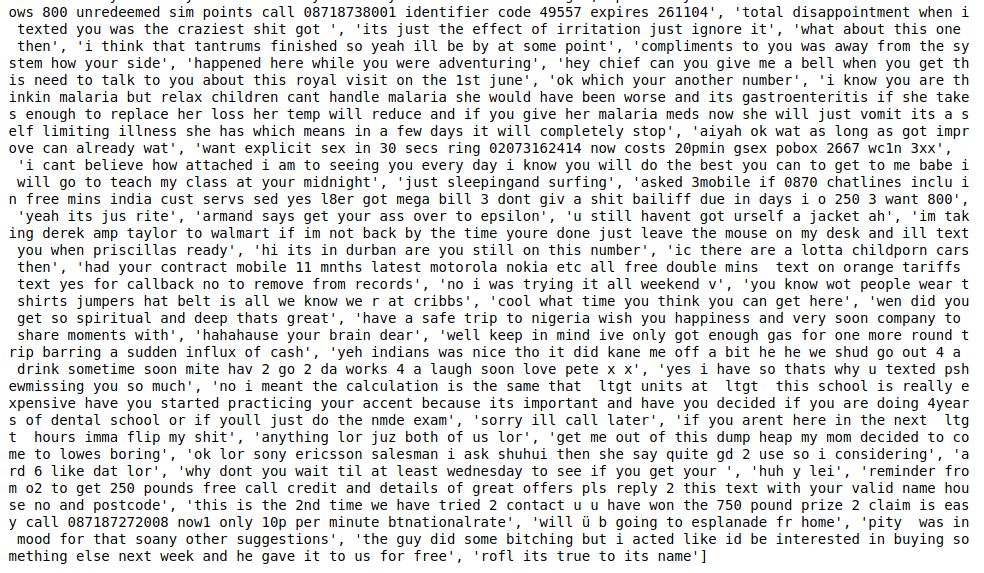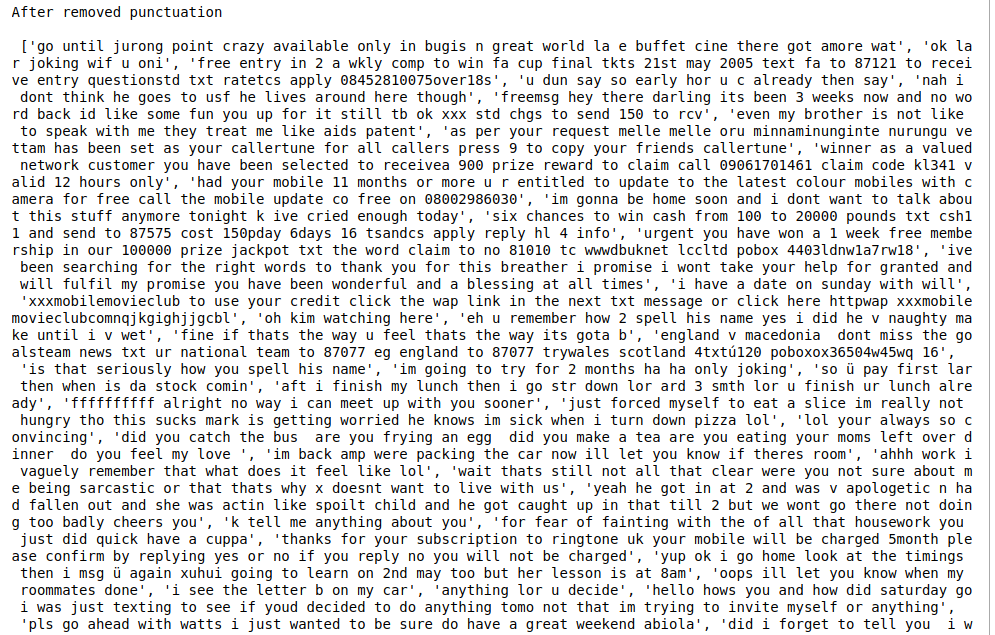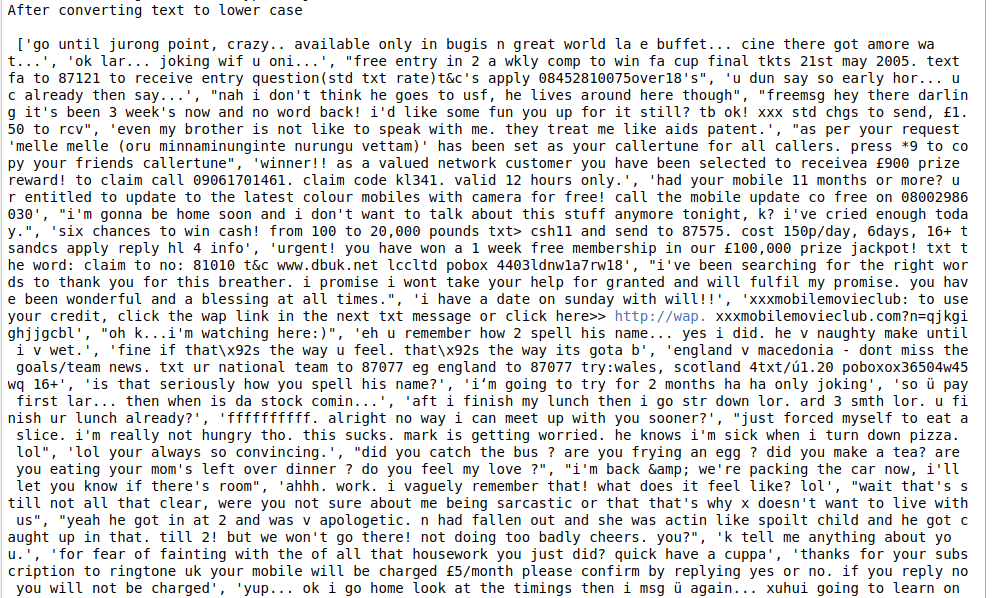To convert text input features in to a vector format using TF-IDF vectorizer in python.
Text data from data set.
Vector for text data.
Load the data set.
Extract the textual feature column.
Remove white spaces.
Convert upper case to lower case.
Remove punctuation.
Initialize TF-IDF vectorizer from sklearn.
Convert the text data into vector
#import necessary libraries
import warnings
warnings.filterwarnings(“ignore”)
import pandas as pd
from sklearn.feature_extraction.text import TfidfVectorizer
import re
names = [‘class’,’text’]
#load the data set
data = pd.read_csv(“/home/soft50/soft50/Sathish/practice/SMSSpamCollection.csv”,sep=”\t”,names = names)
#make it as a data frame
df = pd.DataFrame(data)
#take text data
text = df[‘text’]
print(“Original text data\n\n”,text)
#change text lower cases and removal of white spaces
lower_text = []
for i in range(0,len(text)):
s = str(text[i])
s1 = s.strip()
lower_text.append(s1.lower())
print(“After converting text to lower case\n\n”,lower_text)
#Remove punctuation
punc_text = []
for i in range(0,len(lower_text)):
s2 = (lower_text[i])
s3 = re.sub(r'[^\w\s2]’,”,s2)
punc_text.append(s3)
print(“After removed punctuation\n\n”,punc_text)
#Word vectorization
#Initialize the TF-IDF vectorizer
tfidf = TfidfVectorizer(sublinear_tf=True, min_df=5, norm=’l2′, encoding=’latin-1′, ngram_range=(1, 2),
stop_words=’english’)
#transform independent variable using TF-IDF vectorizer
X_tfidf = tfidf.fit_transform(punc_text)
print(“After vectorized text data\n\n”,X_tfidf)
